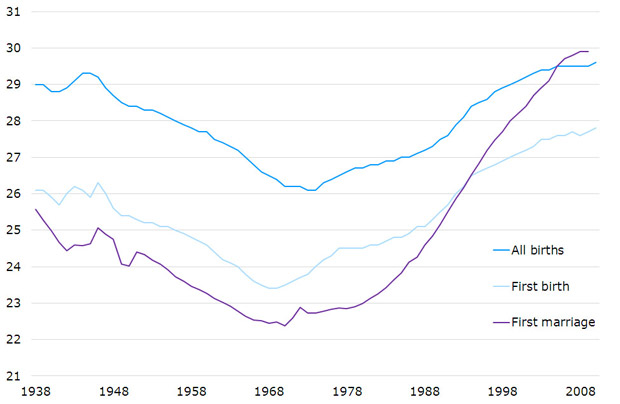But the average age of women at first birth today (29.6) is not very different to what it was in 1938 (29.0), and fertility among women in their forties was higher at the start of WWII and during the 1940s than it was in 2010.
The average age of women at first birth was lower at the end of the 1960s than at any other point since 1938. In the intervening period, the average age of women both at their first birth and across all births was higher, despite this being a period of higher fertility, lower life expectancy and less economic equality between the sexes.
Fertility among women aged 40-44 peaked in 1947 at 19 births per thousand women in England and Wales. In 2010 the number was 13. In between, fertility among older women declined, reaching a low of four births per thousand women aged 40-44 in 1977. These trends can partly be explained by the fact that families were larger than they are today and women spent a greater part of their lives bearing children. In the 1940s around 75% of births to women over 40 were to mothers who already had at least two children. In 2010, by contrast, 61% of births to women in their forties were first or second children.
Married with children? The chart shows the average age of women at birth and marriage in England and Wales.

As the age structure of women’s fertility has changed, so has the age at which women get married. From the 1940s to the 1970s there was a strong relationship between the average age of women at first marriage and the average age of women at first birth, with the former preceding the latter by just over a year on average.
Since the 1980s the average age of women at first marriage has been rising faster than the average age of women at first birth, suggesting more women may be starting a family before tying the knot. Since 2005, the average age of women at first marriage has been higher than the average age of across all births. Meanwhile, the difference between the average age of women at first birth and across all births has been shrinking as families have become smaller.




